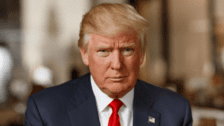India remains pricey, but potential growth remains: Mason Stevens
With India recently taking the mantle from China as the world’s most populous country, many investors are looking to add exposure to its growing, albeit expensive, market. While returns have stalled since late last year, Mason Stevens’ Ian Weir highlights several tailwinds supportive of strong growth for years to come.
In a report examining the outlook for India’s markets, Weir notes that both absolute and relative returns in India have suffered in 2023 as global investors move back into tech-focussed markets like Korea and Taiwan following the end of China’s zero-COVID policy. At the same time, India’s stats speak for themselves: on track to become the third-largest economy, with a forecast annual growth rate of 6.5 per cent, India is expected to see its GDP double over the next 10 years, from US$3.4 trillion to $8.5 trillion.
While the consensus is that India will not be another China, there are plenty of reasons to expect things to pick up from here.
“India can often be viewed by outsiders as being chaotic and risky, but underneath the surface there is a steady passage of reforms in progress,” Weir says.
Like most global economies, India experienced pressure in 2023, but it does not have as much exposure as other emerging markets to the global rate cycle because of its comparatively restrained debt levels and lower reliance on exports.
He cites four points of difference that could set India apart going forward: its upcoming general election, growing role in alternative supply chains, low reliance on exports and increasing domestic consumption.
Spending uptick expected
Since the turn of the century, the incumbent government has increased government spending in the lead-up to general elections, Weir explains. With key state elections in 2023 and the general election set for mid-2024, observers expect a large pre-election spending uptick.
“The fact that India showed unusual fiscal restraint in 2022 means that the equity markets should welcome this potential stimulus in a world where governments globally have fiscally restrained in the last six to 12 months,” he says.
India is also benefitting from the global shift in supply chain dynamics following the pandemic, as countries seek to diversify their supply chains and avoid over-reliance on one country. Weir pointed to Apple’s recent decision to triple its iPhone output in India in a move away from China.
The pandemic also enhanced India’s role as “office to the world” with technological improvements that allow employees to work from anywhere, he said. “Combine this with new developments such as government incentives – which are allowing India to gain traction as a factory to the world as well.”
A unique income pyramid
India’s low reliance on exports and high dependence on consumption will be a boon during the global energy transition, Weir says, as the country’s “energy consumption and energy sources are changing simultaneously in a disruptive fashion”.
“India’s per-capita energy consumption is likely to rise significantly in the coming decade, with two-thirds of the incremental supply coming from renewable sources. This should positively impact India’s terms of trade, entail a significant amount in terms of energy capex, eventually reduce headline inflation volatility as the imported share of GDP declines, creating new demand for solutions such as electric vehicles, cold-storage chains and green hydrogen-powered trucks and buses.”
And consumer discretionary spending is gaining share in India’s total consumption, with the number of households earning more than US$35,000 per year forecast to rise fivefold over the next 10 years to more than 25 million.
“India’s income pyramid offers unique breadth of consumption, with the top end spending like the richest in the world and the bottom end still relatively poor,” Weir says. “The implications are that GDP is likely to rise significantly over the medium term, and there will be a discretionary consumption boom which has the potential for the Indian equity market to outperform its peers.”
Expensive market, for now
Despite these tailwinds for growth, the Indian equities market still looks “excessively expensive”, trading at around the 25-year average level P/E multiple of 20 times, Weir says, and the multiple may trade higher going forward as investors gain greater confidence around India’s medium-term growth.
There are also other potential drivers for India’s financial market that could further promote growth and attract investment, most notably the possibility of India being included in global bond indices, which Weir says would prompt large inflows, improving liquidity and driving debt finance cheaper.
Investing in India is “not without risks and potential market volatility,” with population growth, fragile borders and climate change all representing key challenges in the years ahead, Weir says. And while the Indian equity market is not “quite as straightforward” as developed markets, there is now a “suite of options” available for individual investors to get exposures to some of its largest companies, such as through exchange-traded funds and managed funds.
*This story was first published in The Inside Investor











